Abstract
Microorganisms in sewage decomposed 3.4-dichlorobenzoate and m-, p-, and o-chlorobenzoates. As the substrate disappeared, populations capable of growing on these compounds proliferated. Neither 2,4-dichlorobenzoate nor 2,3,6-trichlorobenzoate was destroyed by the sewage microflora. The addition of glucose or benzoate and m-chlorobenzoate to the sewage did not promote degradation of 2,4-di- or 2,3,6-trichlorobenzoates. The populations responsible for the biodegradation of the chlorinated compounds were initially less than 100 cells/ml. During the metabolism of m-chlorobenzoate, 5-chlorosalicylate and 4-chlorocatechol were formed.
Full text
PDF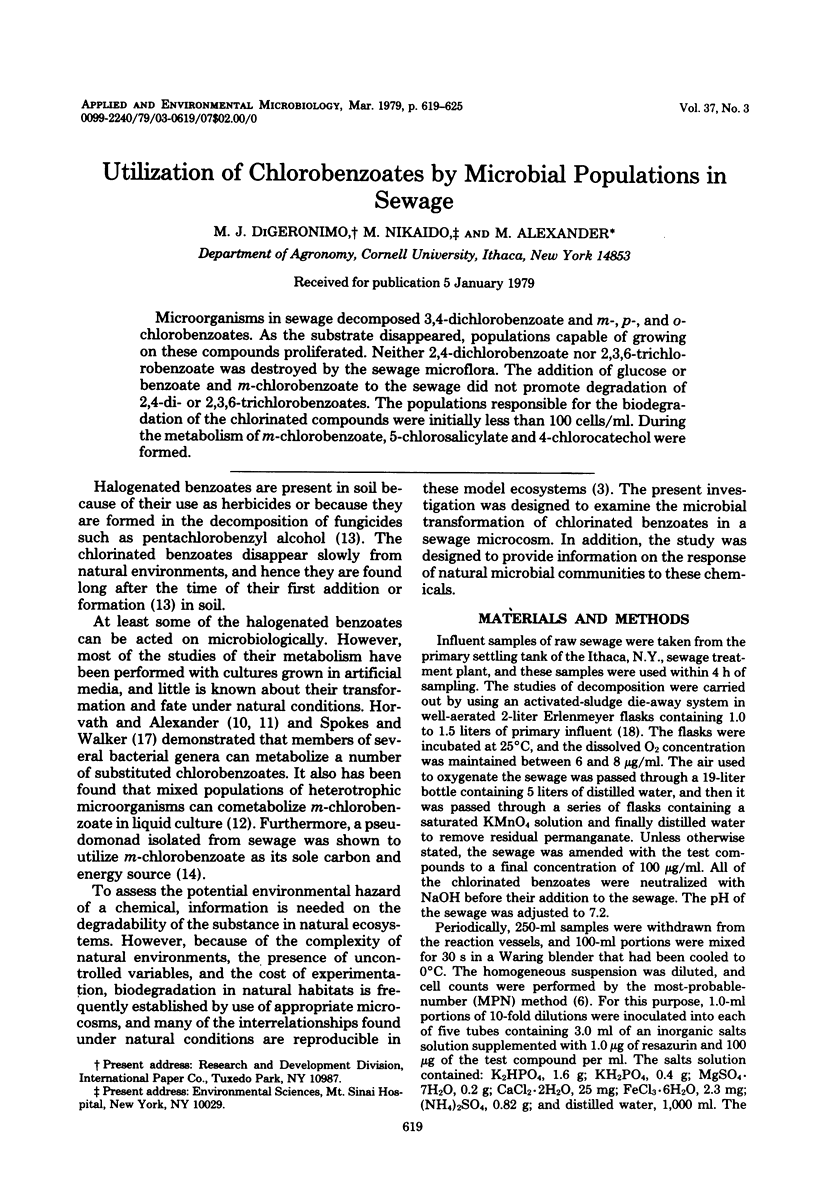
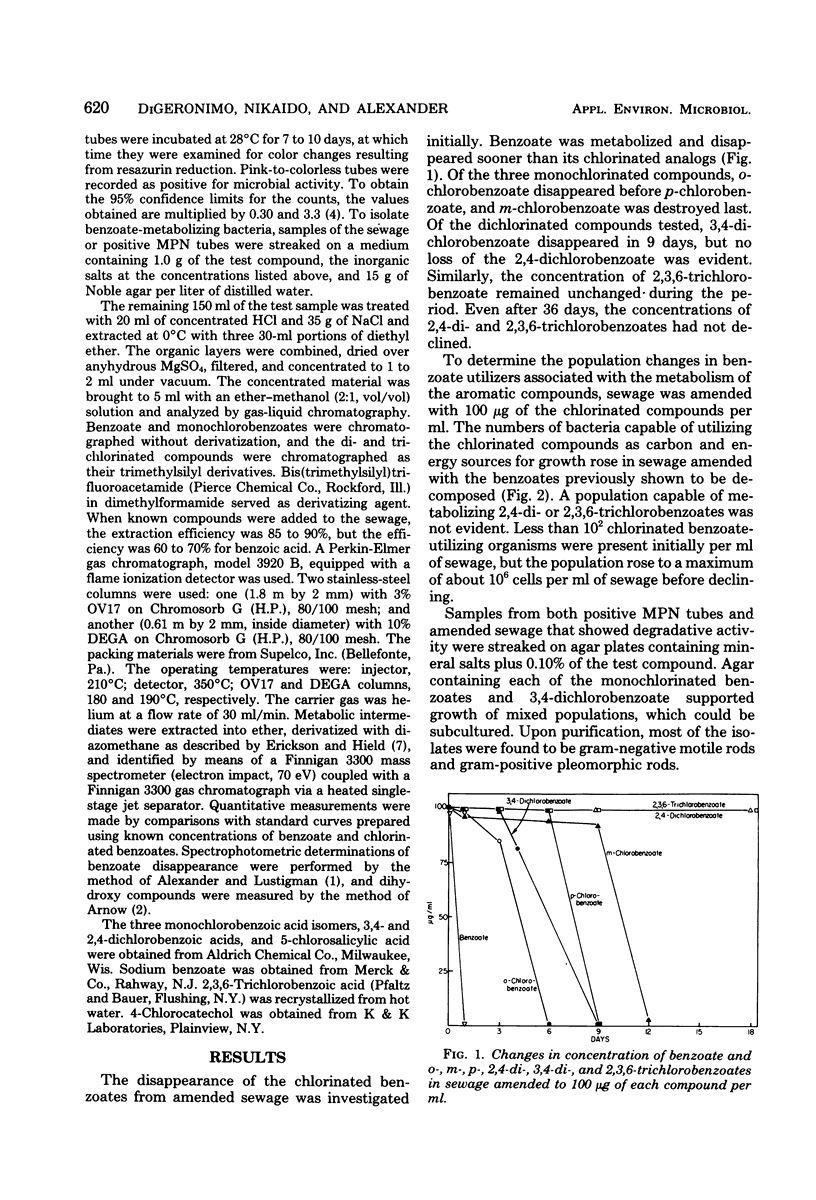
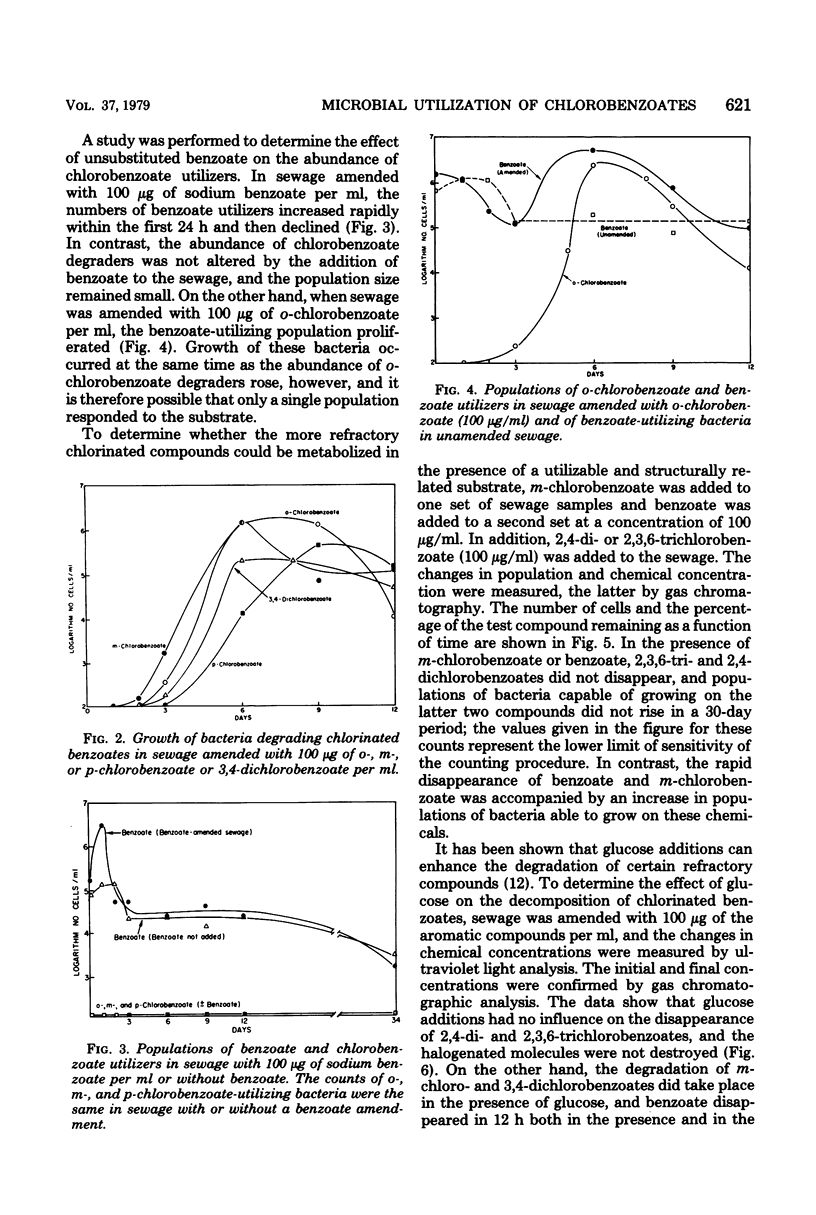
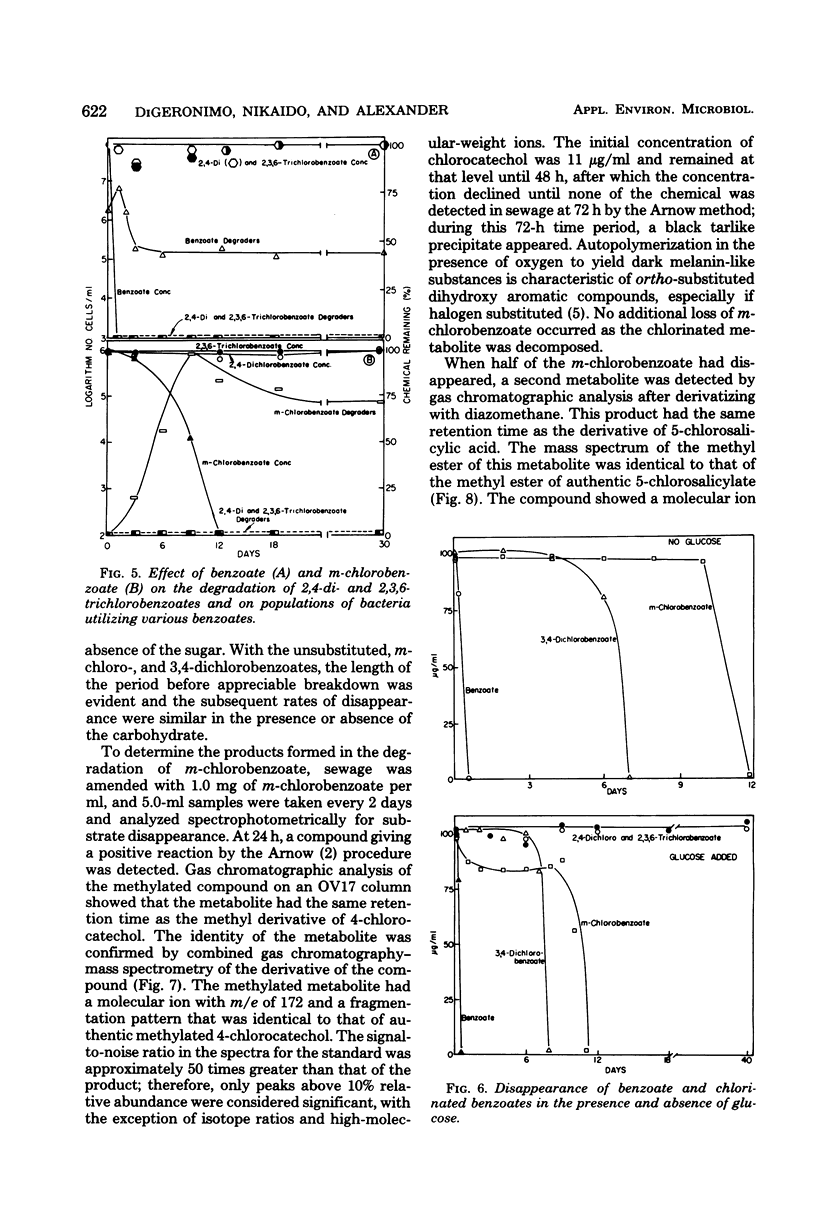
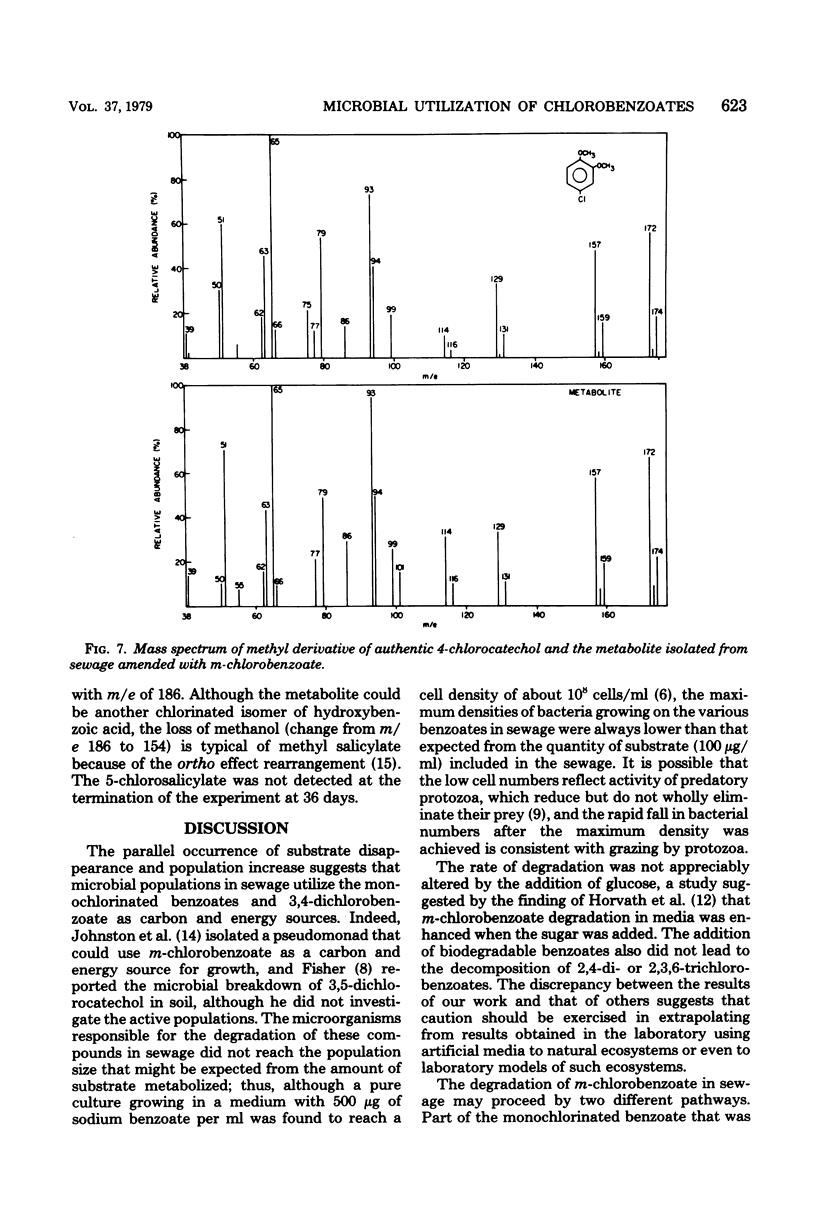
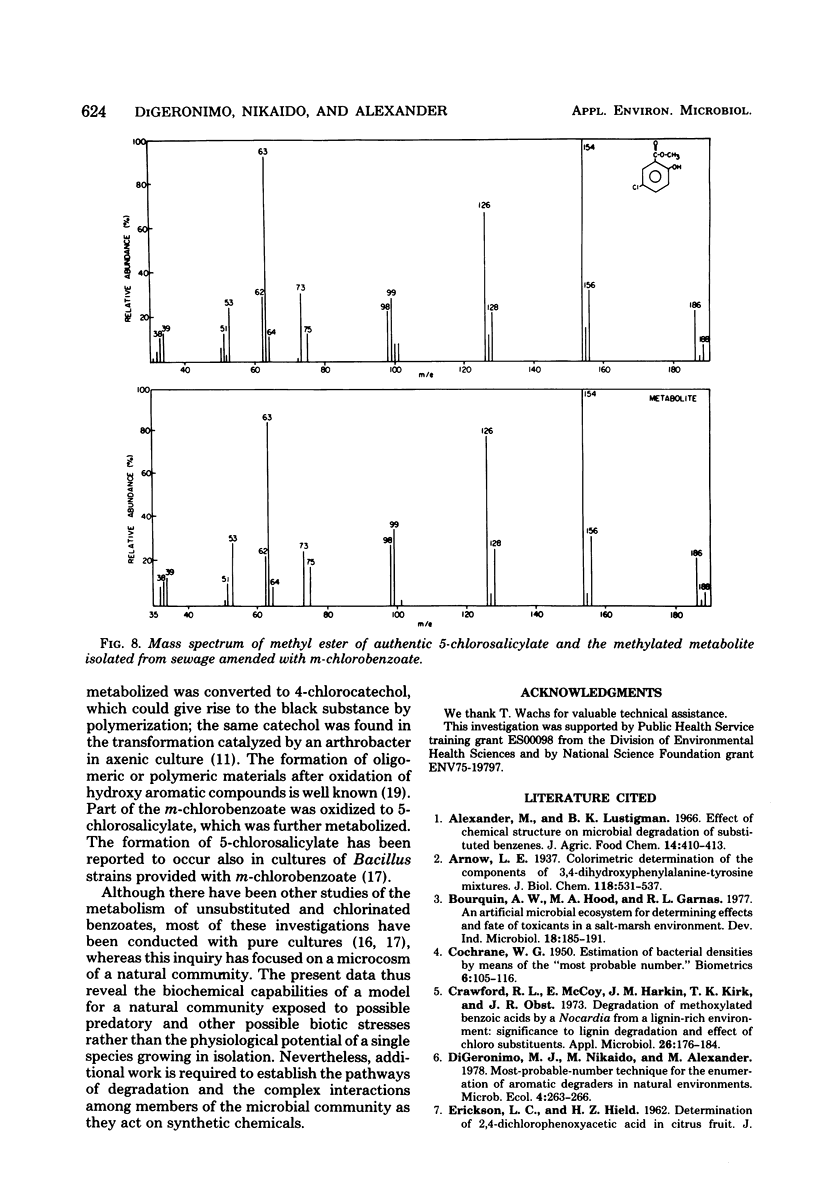
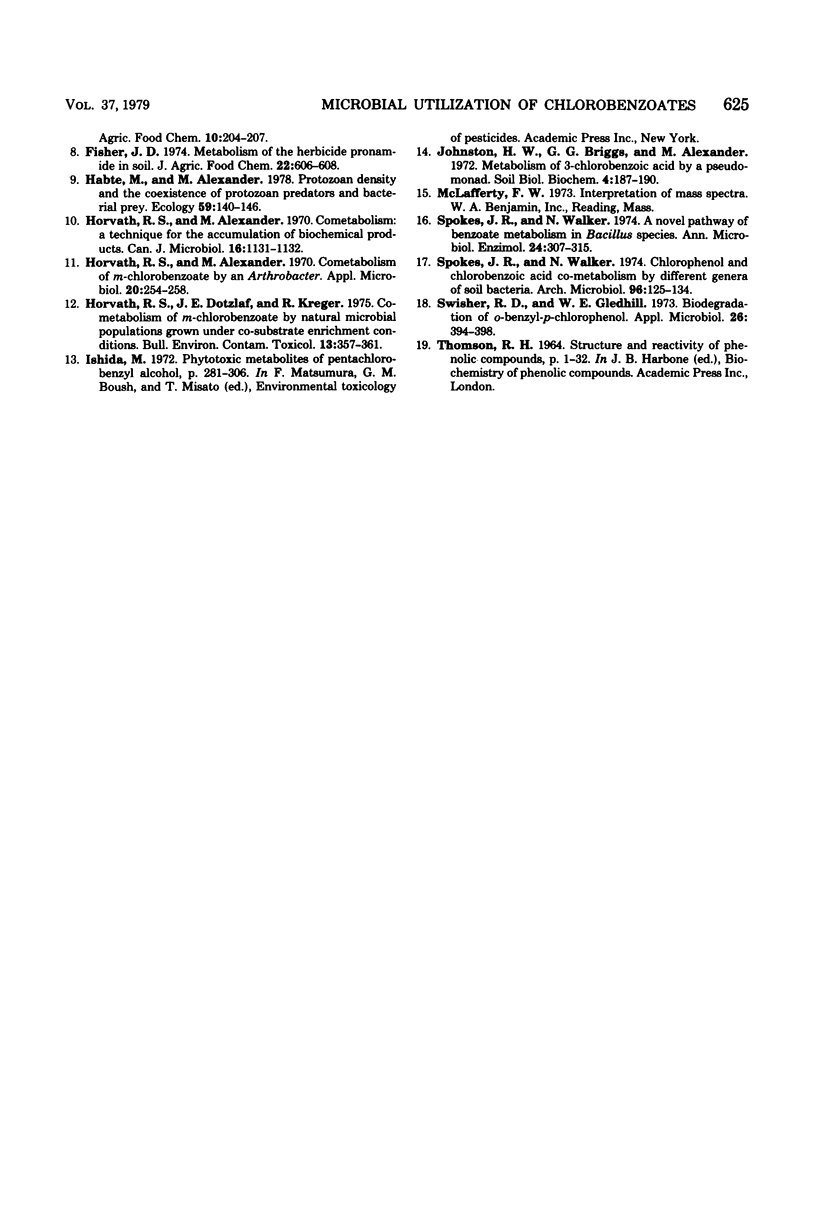
Selected References
These references are in PubMed. This may not be the complete list of references from this article.
- COCHRAN W. G. Estimation of bacterial densities by means of the "most probable number". Biometrics. 1950 Jun;6(2):105–116. [PubMed] [Google Scholar]
- Crawford R. L., McCoy E., Harkin J. M., Kirk T. K., Obst J. R. Degradation of methoxylated benzoic acids by a Nocardia from a lignin-rich environment: significance to lignin degradation and effect of chloro substituents. Appl Microbiol. 1973 Aug;26(2):176–184. doi: 10.1128/am.26.2.176-184.1973. [DOI] [PMC free article] [PubMed] [Google Scholar]
- Fisher J. D. Metabolism of the herbicide pronamide in soil. J Agric Food Chem. 1974 Jul-Aug;22(4):606–608. doi: 10.1021/jf60194a023. [DOI] [PubMed] [Google Scholar]
- Horvath R. S., Alexander M. Cometabolism of m-chlorobenzoate by an Arthrobacter. Appl Microbiol. 1970 Aug;20(2):254–258. doi: 10.1128/am.20.2.254-258.1970. [DOI] [PMC free article] [PubMed] [Google Scholar]
- Horvath R. S., Alexander M. Cometabolism: a technique for the accumulation of biochemical products. Can J Microbiol. 1970 Nov;16(11):1131–1132. doi: 10.1139/m70-189. [DOI] [PubMed] [Google Scholar]
- Horvath R. S., Dotzlaf J. E., Kreger R. Co-metabolism of m-chlorobenzoate by natural microbial populations grown under co-substrate enrichment conditions. Bull Environ Contam Toxicol. 1975 Mar;13(3):357–361. doi: 10.1007/BF01685351. [DOI] [PubMed] [Google Scholar]
- Mires M. H., Alexander C. H. The prophylactic treatment tuberculosis. Del Med J. 1972 Jul;44(7):187–190. [PubMed] [Google Scholar]
- Spokes J. R., Walker N. Chlorophenol and chlorobenzoic acid co-metabolism by different genera of soil bacteria. Arch Mikrobiol. 1974 Mar 4;96(2):125–134. doi: 10.1007/BF00590169. [DOI] [PubMed] [Google Scholar]
- Swisher R. D., Gledhill W. E. Biodegradation of o-benzyl-p-chlorophenol. Appl Microbiol. 1973 Sep;26(3):394–398. doi: 10.1128/am.26.3.394-398.1973. [DOI] [PMC free article] [PubMed] [Google Scholar]


